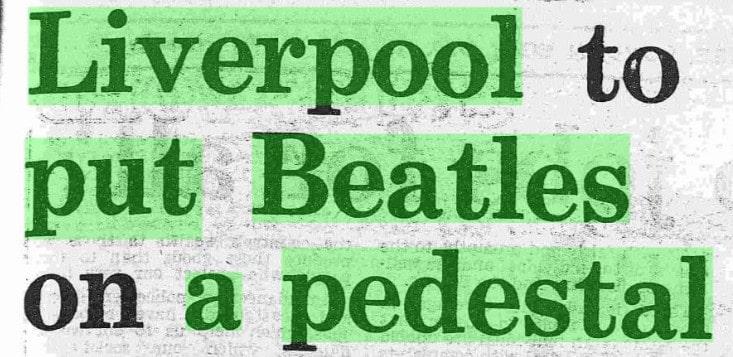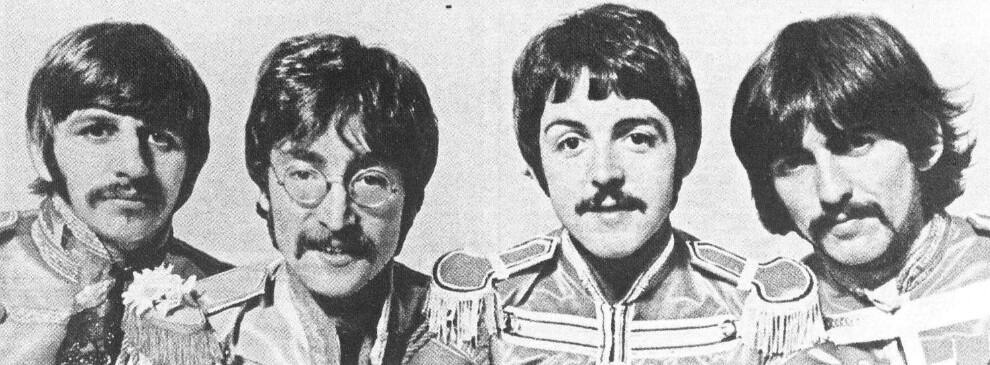By Megan Bowler, Gale Ambassador at the University of Liverpool
Take four, young, charismatic musicians, add four Sgt. Pepper costumes and a city so devoting that their stardom lives on for years to come, and what you should be left with, with any luck, are the Beatles. George, John, Paul and Ringo – iconic names on the British and global music scene throughout the sixties, and still to a considerable extent today. Selling over 178 million units in the US alone, the group were quick to become one of the most celebrated bands in all of music history… and this status certainly still rings true when taking a walk around Liverpool’s Cavern Quarter today.
As the end of the second semester draws in, now is the time for me to begin planning, reading and researching ahead of my final coursework deadlines. So naturally, as I do with any assignment, I looked to Gale Primary Sources to gain some useful, first-hand insight around my ‘Liverpool History and Heritage’ module. Although Liverpool is a city with a vast mercantile, political, slave and cultural history, it is the history of the Beatles and their representation within the city’s heritage that attracted the attention of many of my peers. As a result, I began to question why this was the case. Was it more familiar? More relatable? Easier than, say, the study of slavery? All I could assert for sure, was that, within each and every essay discussing locations steeped in Beatles’ heritage – whether this be the Cavern, the Beatles Story museum, or the many other sites explored while on the Magical Mystery Bus Tour – a wider, arguably more important history of the city was going to be overlooked.
![Left: Loz Pycock, [https://commons.wikimedia.org/wiki/Category:CC-BY-SA-2.0], via Wikimedia Commons](https://www.gale.com/intl/blog/wp-content/uploads/2019/04/1st_collage.png)
Right: Calflier001, [https://commons.wikimedia.org/wiki/Category:CC-BY-SA-2.0], via Wikimedia Commons
When searching through the Gale archives in the hope of gaining a well-informed, background understanding of the topic, I found it interesting to observe trends and patterns within media coverage of the Beatles at different points throughout the sixties and seventies. For example, the years in which the Beatles emerged, grew into prominence within the city’s culture, and eventually achieved an almost complete omnipotence in the city’s heritage, including physical manifestations in the form of statues and other types of idolisation. This article, found within the Daily Mail Historical Archive, was especially useful for such research.

Although proposals for a commemorative statue of the ‘fab four’ were initially contested by the city’s fathers for the discredit the band had once brought on the city, ‘for taking drugs, for being unable to sing’ and for ‘being unworthy of a place in the history of Liverpool’, the article reveals that plans were finally conceded to, after staunch protest from the ‘musical faithful’. Indicated to at first by the multi-interpretable term ‘pedestal’ in the article’s headline – indicative of both the platform upon which the statue would be erected and the state within which the band will be uncritically admired throughout the city – the journalist suggests that the statue, designed to commemorate the legacy of the band, will ensure they achieve complete ‘immortality’ within Liverpool. It is therefore clear to see, from articles such as this, how, over time, the Beatles have acquired an unrivalled prevalence within the city’s heritage.
In my final essay, through an engagement with primary source material found within Gale Primary Sources, I intend to shed light on the overshadowed faces of Liverpool’s alternative music scene, including the effect this had on Liverpool’s marginalised, ethnic minorities; challenge the appropriateness of determining a Beatles narrative to be dominant over other, hidden histories of the city; and finally to explore the extent to which a Beatles’ heritage may be deemed authentic, or even worthy of its superior position in Liverpool today.
So, if, like me, you’re in desperate need of a wider module understanding, or niche research materials to assist your essays or dissertation, scroll over to Gale’s archives today!
Blog post cover image citation: “Money can’t buy you love, but £85,000 gets two Beatles classics.” Daily Mail, 28 Aug. 1992, p. 19. Daily Mail Historical Archive, 1896-2004, http://link.galegroup.com/apps/doc/EE1860545750/GDCS?u=livuni&sid=GDCS&xid=bf41f3b6. Accessed 2 Apr. 2019.


